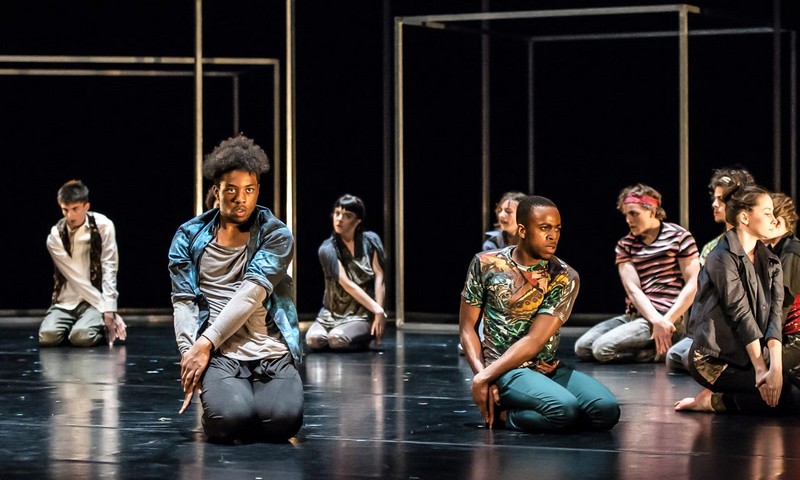One of the most rewarding parts of running initiatives for young dancers is knowing that the people with whom I work will be some of the leading choreographers and artists of tomorrow. And judging from the outstanding levels of skill, commitment, motivation, creativity and courage that I see on a daily basis, the future looks bright.
But the arts world of tomorrow can be a difficult one to imagine, as today’s young people – the artists of the future – are growing up in a very different world to the one in which my peers and I grew up. Their career paths will be markedly different from those of the adults who are making the decisions about their education and development.
As we enter another academic year, the arts have a precarious position in young people’s lives. Government plans for the study of the arts have been scrutinised and debated in recent months. The value of the “core” Stem (science, tech, engineering and maths) approach has been pitted against the Steam approach (the “a” is for arts). The former threatens to squeeze the arts out of the education system, and out of the minds and hearts of young people.
A wealth of research – recently from the likes of the Cultural Learning Alliance and Creative Industries Federation – continues to illustrate the positive impact of studying the arts and the benefits of learning through artistic and creative practice, particularly for young people who come from economically or socially deprived backgrounds.
High-profile creative figures continue to campaign for the arts and their “incalculable worth in what it means to be a human being,” as author Philip Pullman put it. Even the head of the Confederation of British Industry recently made the case for arts education, underlining its importance not only for the arts sector, but for business, which today thrives on artistic and adventurous creativity.
Yet, the evidence that every child’s core learning entitlement in formal education should include knowledge and experience of the arts is all too often overlooked. Meanwhile, funding for out-of-school arts projects is being cut, as local authorities struggle to cope with government policies and spending constraints.
A range of organisations devote themselves to go above and beyond national efforts to encourage and nurture artistic talent, tasking themselves tirelessly with putting their artforms at the top of the agenda for young people in their country. This, in today’s climate, is becoming increasingly challenging.
Anyone in a job similar to mine could tell you about the struggle to get the government to pay greater attention to the arts and recognise the benefits they bring, particularly for young people. Certain sectors in the arts world can also be far too quick to dismiss the work of young artists as low-quality amateur work that is irrelevant to the professional world.
On the contrary, the standards at which young dancers in this country and abroad are performing can be outstanding and on a par with professional companies, with the added exuberance and freshness that younger artists can bring, as our new annual Apex Rising youth dance festival, which just opened Sadler’s Wells autumn/winter season, aims to illustrate. It therefore becomes our mission to do everything possible to help young people produce exceptional work and make it known that these emerging artists are a force to be reckoned with.
There are certain things that can be invaluable for a young dancer’s development. For example, creating, rehearsing and performing under the direction of accomplished professional artists can be crucial and, indeed, life changing. Rigorous practice in carefully spaced out intensive sessions helps young people learn the purpose of preparation. Multiple performance opportunities develop an understanding of sharing the creative process with an audience and of knowing oneself better as an artist. Other elements such as strong peer support, daily reflection to articulate, analyse and consolidate learning, and contextual understanding also serve to ensure that all dancers achieve their best.
But before we can instigate this journey of nurturing and developing, we need the talent to be out there in the first place and to be able to identify it. Over the past three years, since the inception of the National Youth Dance Company (NYDC), around 50% of the company’s selected dancers have had some sort of formal dance training. So how did the other half find an interest in dance? Mainly through their schools and colleges, ranging from one-off visits to dance performances, to dedicated teachers running weekly dance clubs or finding space for dance in the ever-more pressured curriculum.
Without a sufficient emphasis on arts in the mainstream, many young people without prior knowledge or family support will not discover their artistic interest and aptitude. They will not find their way to the people and organisations that can offer them the chance to develop and fulfil their potential. They will be denied the opportunity to reward their talents and possibly to lead rich and satisfying lives.
The key to building a sustainable arts future therefore lies in making young artists a priority today, in education and all other areas of everyday life. They are the leading choreographers, directors, painters, sculptors and composers of a tomorrow that will come all too soon. They have the power to shape the future and they ought to be taken seriously.
Jane Hackett is director of the National Youth Dance Company
Join our community of arts, culture and creative professionals by signing up free to the Guardian Culture Pros Network.
guardian.co.uk © Guardian News & Media Limited 2010
Published via the Guardian News Feed plugin for WordPress.


